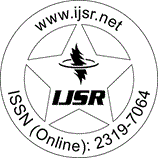Downloads: 4 | Views: 316 | Weekly Hits: ⮙1 | Monthly Hits: ⮙1
Research Paper | Periodontology | India | Volume 10 Issue 7, July 2021 | Popularity: 5.4 / 10
Determining the Antibacterial Substantivity of Green Tea Mouthwash and Comparing it with 0.2% Chlorhexidine Gluconate after a Single Oral Rinse: A Crossover Clinical Trial
Dr. Priyanka Awasare, Dr. Rajesh Gaikwad, Dr. Veena Viswanadh
Abstract: Introduction: Green tea (Camellia sinensis) originated in China, is one of the most popularly consumed beverages worldwide. it is particularly rich in flavonoids which include catechin. Present study is to identify the substantivity of green tea mouth rinse and duration of its antibacterial substantivity after a single oral rinse and compare it with the substantivity of 0.2% Chlorhexdine gluconate. Methodology: Unstimulated saliva sample (baseline, pre-sample) was collected in sterile penicillin bulbs in the morning 2 hours after routine oral hygiene procedures. A washout period of 1 week was kept between two mouthwashes. The sampling was repeated in a similar manner after every 2 hours for 12 hours. (post 1, post 2, post 3, post 4, post 5, and post 6 samples) and was checked for microbial count. Result and Conclusion: Green tea mouth rinse has an antibacterial effect for 4 to 5 hours after a single rinse where as Chlorhexdine mouthwash remains the gold standard providing maximum antibacterial substantivity for 7 to 8 hours.
Keywords: Green tea mouthrinse, chlorhexidine mouthrinse, antibacterial substantivity
Edition: Volume 10 Issue 7, July 2021
Pages: 444 - 448
DOI: https://www.doi.org/10.21275/SR21706193521
Please Disable the Pop-Up Blocker of Web Browser
Verification Code will appear in 2 Seconds ... Wait
